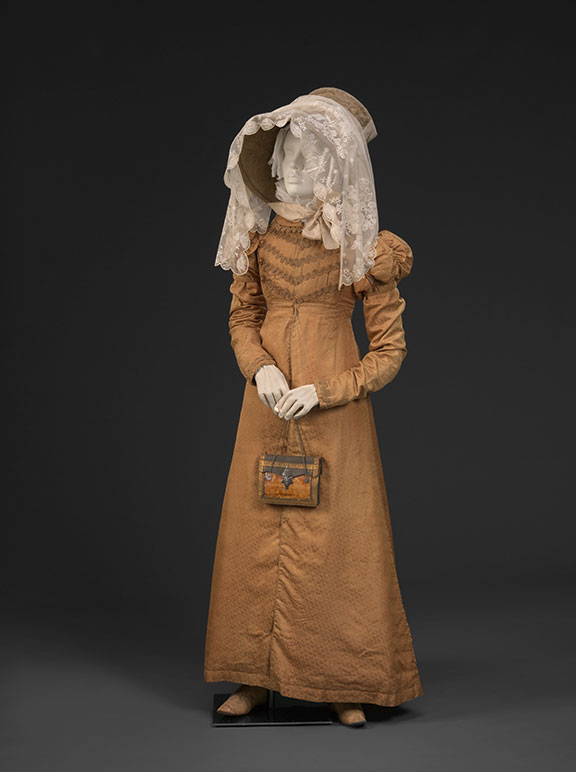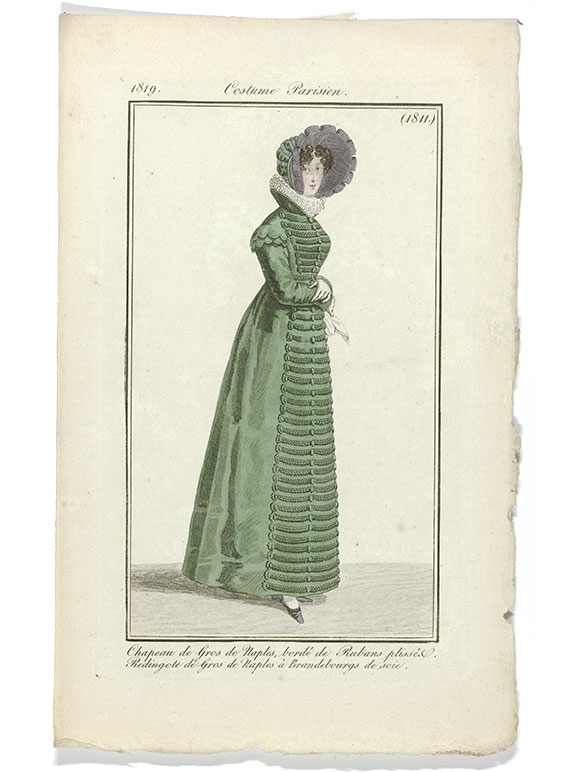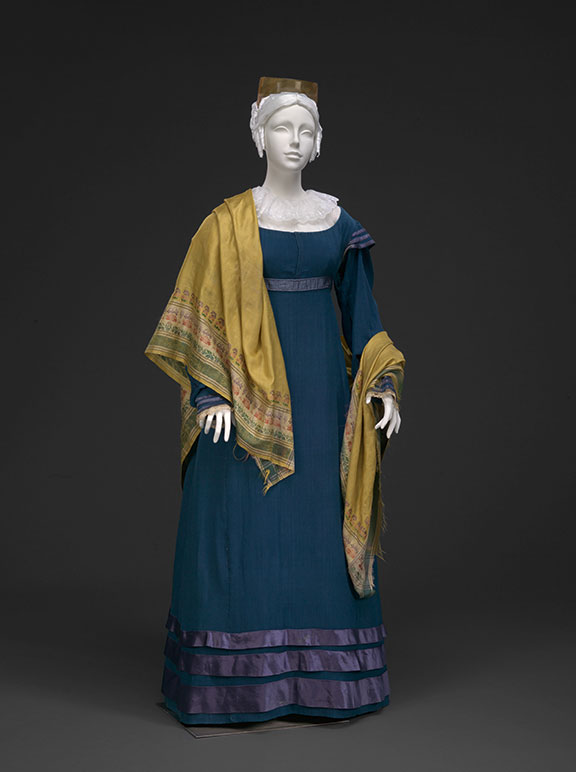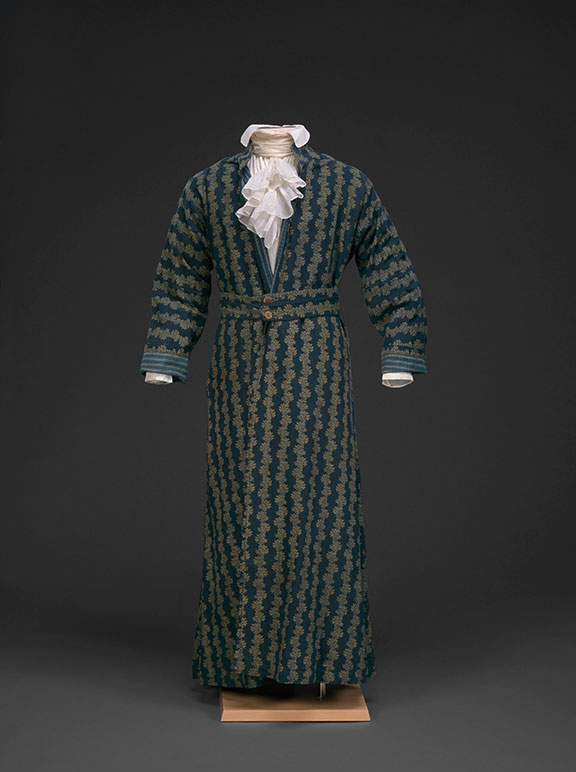Pelisse
Late 1810s
Style: The slimmer silhouettes of the early 1800s were well suited to fitted coats. Just as we have many names for different types of overcoat, the early 1800s had redingotes, greatcoats, douillettes, and pelisses. The pelisse often sported fancy details and trim. In this coat, Renaissance-style sleeve puffs combine with military-inspired gimp trim on the bodice.
A wide-brimmed bonnet—this one is of animal fur, beaver or possibly rabbit– and gloves, a stylish purse, and practical leather “half-boots” reaching to above the ankle complete the look.
Fabric: This “figured sarsnet” was a popular fabric choice for pelisses; sarsnet was a lightweight silk, often in twill weave, and “figured” refers to having a woven decorative design, often floral or foliate.
A pelisse of similar color and fabric, believed to have belonged to Jane Austen, is in the collection of the Hampshire County (UK) Museum Services and Archives.
Figured silk sarsnet pelisse, silk gimp trim, c. 1820; leather “half-boots,” 1810s; and reproduction chemisette, private collection; beaver or rabbit skin bonnet, lined with pasteboard and glazed cotton, wire brim, 1820s, worn by Elizabeth Margaret Chandler in Michigan, 83.4.2, gift of Margaret Merritt Broecker; Bonnet veil, embroidered silk net, early 1800s, 61.146.1, gift of Clair Thompson; leather, tortoiseshell, steel and glass purse, 1795-1815, probably French, 3188, gift of Katherine Batcheller.
Pelisse with sleeve puffs and military style trim in an 1819 fashion plate. Journal des dames et des modes (Paris).









